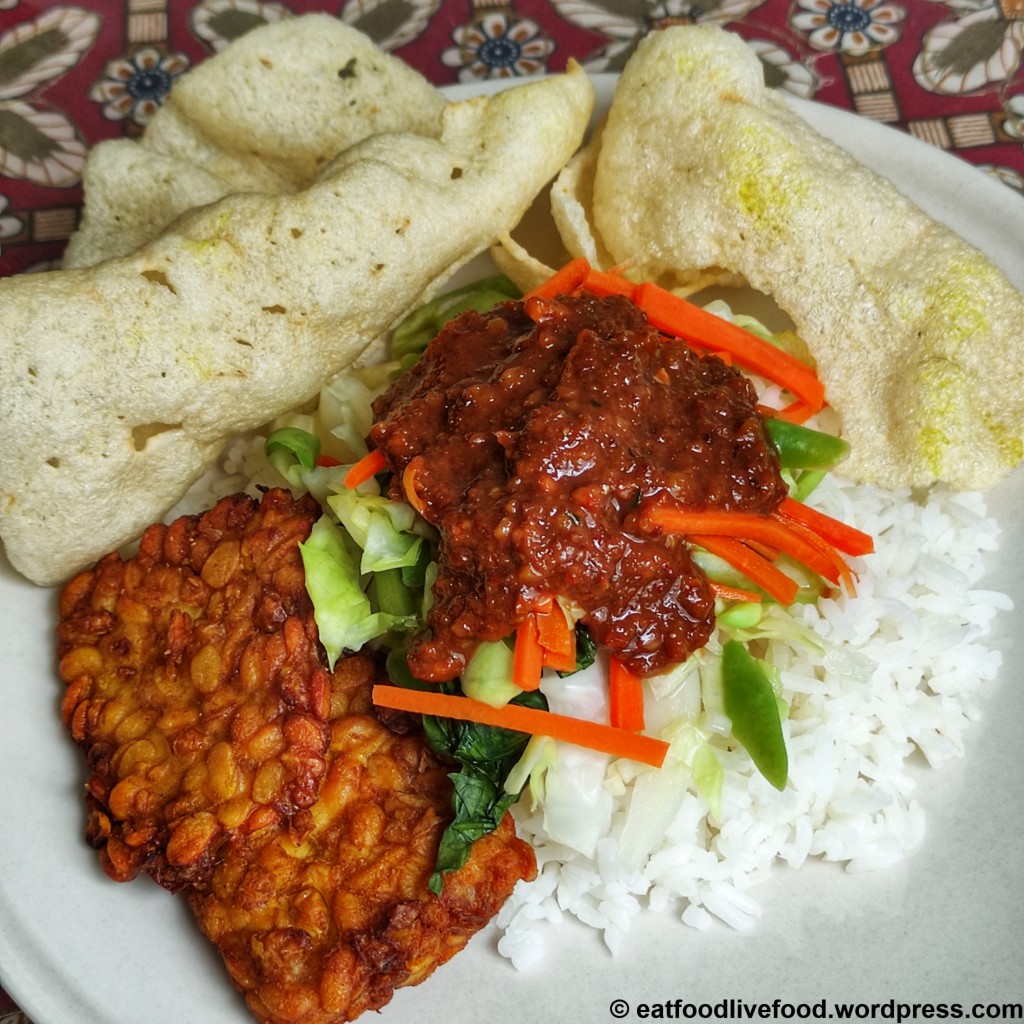
Sego pecel, nasi pecel, or nasi jenganan is a rice dish commonly consumed by the people of Indonesia, Singapore, and Malaysia. This dish serves as nutritious fuel for many in the Malay Archipelago and can be found at eating establishments ranging from streetside pushcart stands to restaurants.
The word “pecel” roughly translates to “the act of squeezing water out of something” in Javanese, but is now commonly known to refer to a Javanese salad made with peanut sauce and vegetables.
Though its name and accompanying dishes differ depending on one’s geographic location and/or upbringing, the signature peanut sauce serves as the common unifier amid its many aliases and variants.
The use of kencur (Kaempferia galanga) lends a distinct and fragrant aroma to the dish’s signature peanut sauce, while a subtle tartness courtesy of tamarind and/or calamansi lime juice cuts through the richness of the fried peanuts and palm sugar. More layers of flavour from oil-blanched chillies, garlic, and shallots completes the sauce’s balanced trinity of sweet, sour, and spicy.
A medley of boiled vegetables such as – but not limited to – pucuk ubi/daun ubi (tapioca shoot leaves), papaya leaves, kangkong (water spinach), cabbage, carrots, snake or French beans, and bean sprouts is often dressed liberally in the aforementioned sauce. The resulting mixture is the antithesis of anything and everything deemed “Instagram-able”, but serves as the epitome of unpretentious comfort food made with simple and readily-available ingredients.
Last, but most certainly not least, the highly recommended addition of tempeh, tofu, gorengan (fritters), and/or keropok (crackers) adds texture with each mouthful, which rounds off the dish and entire eating experience.